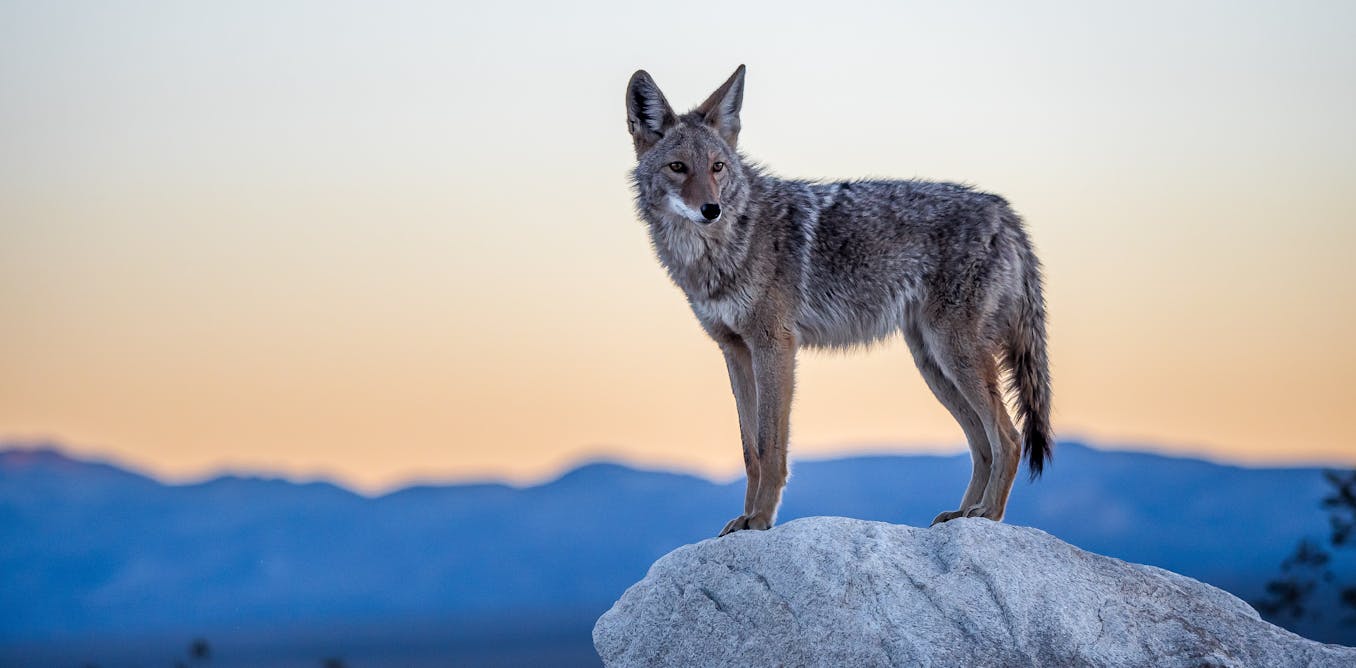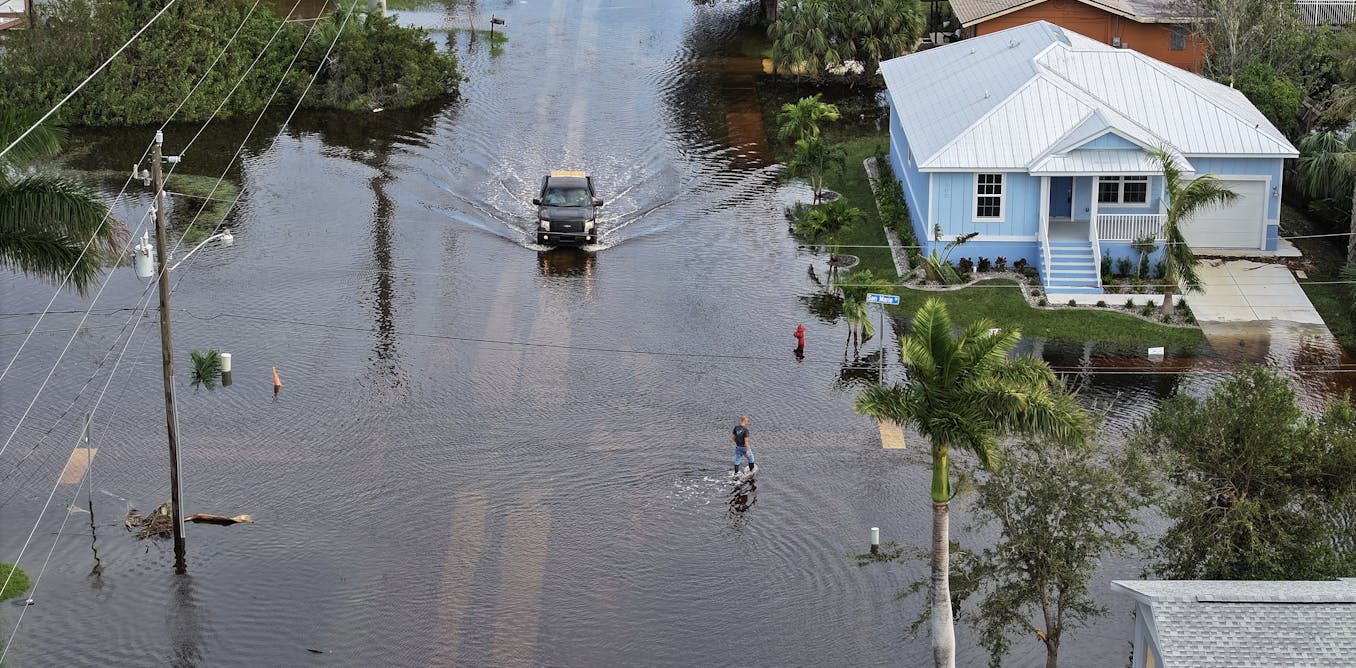At around 4 a.m. last Saturday an unusual thing happened at Burning Man. The event, typically an all-hours hubbub of music, art cars, laughter, weeping, whirring bikes, bass drops and other assorted cacophony went silent.
The only sound was the rain.
The now infamous near-inch of rain that turned the annual desert gathering into global news as it transformed Nevada’s typically bone-dry Black Rock Desert into a gloopy expanse of thick, slippery mud. Mud that stuck to shoes in three-inch slabs. Mud that made it impossible to peddle a bicycle — Burning Man’s primary mode of transportation — or drive any type of vehicle without getting stuck or, worse, slice ruts in the roads making driving difficult once the ground dried. I’ve been to Burning Man eight times — for fun, for adventure, for work. I’d never seen anything like it.
Hoping to save the roads for the mass exodus of 73,000 people that typically happens on Sunday and Monday, a no-driving order was put in place, and everyone was told to stay off the road to the event’s lone gate. (“PLEASE don‘t be that person,” pled the Wet Playa Guide published on the Burning Man website.) No more Burners were let in, and those already on-site were advised not to leave. Some tried to drive away, and those without four-wheel drive and all terrain tires failed. Some, (yes, famously, like Diplo and Chris Rock), got out on foot, walking the six miles from the event site — a seven square mile swath of flat, expansive desert — to the sole paved road that leads back to civilization. Most of us just put on warmer clothes and adjusted to our new reality.
Rumors swirled that we might all be stuck there for a few extra days, or maybe a week, or possibly longer, if it kept raining. The ground would need 12-24 hours after the last rain to become drivable, we were told. The burning of the man — the event’s namesake ritual that typically happens Saturday night before people start heading home — was postponed, as fire trucks couldn’t get to the structure and the wood was too damp to burn. The shuttle service meant to return 20,000 Burners back to Reno and San Francisco was suspended. We were advised to conserve food, water and fuel. Between public service announcements, Burning Man’s FM radio station played Phil Collins‘ “Another Day in Paradise” and, looking at the flooded tents and Burners with plastic grocery bags duct taped around their shoes, one couldn’t help but laugh. Or cry. Or both.
There’s essentially no cell service at Burning Man. The event is made up of hundreds of camps, small settlements serving as temporary homebases to groups of Burners, and while some have Wi-Fi and Starlink, the Burning Man guidebook notes that it’s “highly discouraged.” Burning Man’s much-touted 10 principles — a sort of ethical guide for how to exist at the event — includes “immediacy,” which is of course hard to achieve when doom scrolling or answering emails on one’s phone.
This forced disconnection with the outside world is a feature, creating a sense of presence by cutting Burners off from what many refer to as “default reality.” But as news about what was going on got out, some information also got back in.
“We’re on the front page of CNN,” a fellow camper told me Sunday morning as we gingerly navigated a plywood walkway laid over the gloop. Thanks to (false) rumors about an outbreak on the playa, we heard “ebola burning man” was trending on fellow Burner Elon Musk’s social media platform recently renamed X. We heard Burning Man 2023 was being called “a national emergency,” that FEMA was coming. When I logged onto Wi-Fi at the tent that sells ice, I got 23 texts from family members, friends and colleagues asking if I was safe. If I was scared. If I was OK. “You picked a great year to skip Burning Man,” texted my dad, who was alarmed to then learn I was actually there.
I was there, and I was OK. Generally, we all were. It’s likely people were having breakdowns in the privacy of their tents and RVs as travel plans changed, workdays were missed, and the next few days of our collective existence became a question mark. But also, uncertainty is exciting, and why go to Burning Man but for an unconventional experience? There was a buzz in the air during the hours and days when we weren’t quite sure what would happen — it was sometimes faced with tears and frustration, and other times laughter, dancing and tequila shots.

Every Burning Man tests the mental, emotional and physical limits of its attendees. This year, tickets were unusually easy to get, with many people skipping this go around after calling 2022 their hardest Burn ever. Last year, temperatures hit around 106 degrees, which in comparison made the rain feel like a reprieve. It also — like the extreme heat the year before — demonstrated that the real emergency is the climate crisis. That point was well emphasized by the climate activists that briefly blocked the road into Burning Man as this year’s event started to protest the private jets that shuttle rich Burners in and out of the event and attendees’ prolific use of single use plastic and generators.
The rain did change a few things. The speed of Black Rock City, as the Burning Man site is called, slowed from the swift clip of the electric bikes zipping around the playa to a walking pace. A few parties, talks and DJ sets were interrupted. Art cars decorated like dragons and spaceships stayed parked at their respective camps. A man at a nearby RV suffered a mild injury when some buried cables got wet. (He received medical help immediately and was ultimately fine.) There was also one death at the event that was unrelated to the weather. People who’d planned to leave early (Burning Man typically ends on Sunday) couldn’t. The event’s airport, the hub for those aforementioned private jets, was closed. But no one went into a panic, and no systems broke down, they just adapted.
Meanwhile, the media portrayed it as a disaster. But it never felt that way on the ground. Maybe people were hoping for it in some perverse way. That’s predictable with anything related to Burning Man, though — it’s an event that’s hard to understand and easy to judge among those who’ve never been.
What most Burners know — and what’s probably lost to the outside world amid the hyperbole of drug use and dusty dancing — is that the event is a major test of self-reliance. Tickets only grant access to the access road in and use of the provided porta-potties. Attendees must bring everything else — their own food, water, shelter, garbage bags, you name it. A “survival guide” is sent to all attendees along with their tickets. All programming is conceived of, paid for and hosted by attendees. Taking care of yourself and others is intrinsic to the experience. So while we may have been stuck there longer than expected, after an extra day or two there was little threat of Burning Man going down in flames — or floods. In short: For most of us, besides the threat of missing an extra day of work, we adapted, and we were fine.
“I’m never worried about Burners,” a Bureau of Land Management officer told me in 2021, during the unofficial rogue Burn, which was organized by attendees after the official event was canceled due to the pandemic. “Burners have their sh– together.”
Oh, did I mention my tent flooded? “Communal effort” is among the 10 principles at Burning Man. A nearby RV adopted us, and later the camp rallied to cook up tacos for 200. Minus the momentary silence, a lot of sound camps didn’t stop playing music, and a lot of people never stopped partying. One DJ launched his Saturday afternoon set with “Purple Rain,” attracting a large crowd — many of them wearing just socks on their feet, and many barefoot — that danced in the mud. Those not keen on dancing dropped in on impromptu workshops teaching relaxation breathing techniques. One camp transformed itself into a medical facility. Around the city I was offered water, Gatorade, mezcal, stuffed animals, a popsicle. More than one person observed that if they’d been watching all this on the news, they’d have been disappointed to miss it.
If viewers at home saw tens of thousands of stranded Burners eating tacos and dancing in mud, would they have stopped laughing at us? Probably not. And’s that’s fine. The outside world makes fun of Burning Man because Burning Man is easy to make fun of — especially when 73,000 of us clad in faux fur jackets and shoes with plastic bags duct taped to them are indefinitely trapped in a remote mud pit. It was funny to the people at home, but it was f—ing hilarious to us.

Eventually the parties and events wound down, and after two more showers on Sunday, the rain stopped too. By then, Burners with burly enough trucks and RVs started making their way out, despite the no driving order. If there was discord at the event, it was between the faction that immediately left and those that stayed behind. With “radical self-reliance” as another Burning Man principle, it’s hard to say there was a real right or wrong.
By Monday afternoon, the sun was out, and the roads were dry and deeply rutted in areas, although even the littlest Hondas and Hyundais were leaving with no problems. (“I will not let Burning Man break me!” a woman driving an RV announced out the window as she slowly departed.) Many camps were partially or fully dissembled by the time the man burned Monday night, when the playa had dried enough so that all the art cars were able to surround the burn site, as is tradition. “If we can burn the Man,” some longtime Burners recalled the event’s late founder, Larry Harvey, often declaring, “we have won.”
It took me 16 hours to get from camp to Los Angeles on Tuesday. By the time I got home, many of the Burners I follow on Instagram were posting about how this year was their favorite ever.
As of today (Friday, Sept. 8), there’s not much left out there in the desert. People who needed to leave early due to the rain are returning to the event site, where they’ll have until Saturday to take apart their projects, tear down their camps and remove their things (an opportunity specific to this year, given the situation). An email update sent yesterday by the Burning Man organization notes that all but one of the vehicles stuck in the mud within the closure area “have been liberated.”
Burning Man doesn’t have a merch stand. While one typically returns home with a few trinkets, it’s cheesy and very Burner-ish but generally also true to say that the real takeaways are the inspiration and the memories. But the experience, mind-blowing the first time, changes you a little less with each outing. One can become inured to the dragons and the spaceships. The rain brought unique challenges that gave the experience fresh opportunities, new forms of fun and renewed potency. It’s hard to call that a disaster.

The article “Burning Man 2023: Relatively Normal, Honestly Great” by Katie Bain was published on 08/09/2023 by www.billboard.com





































